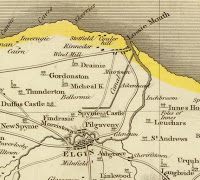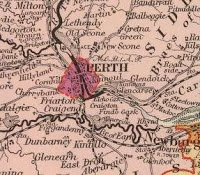February 2023
“Prachtsatlanten” - a new g...
January 2023
OldMapsOnline - new version...
May 2022
Utrecht University - "Atlas...
January 2022
Swiss Maps Added to OldMaps...
June 2021
Zentralbibliothek Zürich - ...
October 2020
Successful pilot of Moravia...
4000 new maps in OldMapsOnline
May 2017
Bounding Box tool improvements
May 2016
Rotation of a map in Georef...
December 2015
Transcription in Georeferencer
Georeferencer for TU Darmstadt
November 2015
OldMapsOnline.org in Intern...
August 2015
Georeferencer for Leiden Un...
July 2015
OldMapsOnline - new version...
June 2015
Georeferencer for State Lib...
March 2015
IIIF viewer at The National...
December 2014
Planned downtime: Saturday ...
Publish maps and large imag...
November 2014
Georeferencer for David Rum...
New York Public Library: Mo...
October 2014
IIIF for images in cultural...
August 2014
Utrech University used our ...
July 2014
National Library of Scotlan...
April 2014
Open Data Award in Apps For...
March 2014
Impact video now available
November 2013
The British Library Georefe...
Battersea Arts Centre Digit...
The Austrian National Libra...
October 2013
His Majesty King Willem-Ale...
September 2013
FOSS4G 2013: Old Maps Onlin...
WebGL accelerated Georefere...
Old Maps Online at the Inte...
July 2013
Coding session of our devel...
June 2013
The Bounding Box Tool descr...
April 2013
Preserved for posterity
Map overlays with WebGL: af...
January 2013
British Library: 3rd Georef...
Online reviews of Old Maps ...
Edinburgh Conference: Worki...
December 2012
Petr Přidal awarded Barthol...
November 2012
AHRC Digital Transformation...
BMArchives.org launched
Focus on the Collections: T...
Old Maps Online - so what?
October 2012
New crowd-sourced Geo-refer...
Focus on the collections: A...
July 2012
Google think we are cool ...
New article published about...
Google I/O 2012 - Google in...
World History Association C...
June 2012
Google I/O conference 2012
"The best search service fo...
Presenting at Geoforum: Old...
JISC Programme Manager's visit
Presentation & Steering Gro...
May 2012
General project update May ...
LIBER Groupe des Cartothéca...
Showcased on Google Develop...
April 2012
Old Maps Online and Georefe...
Publicising Old Maps Online
March 2012
Meet us at ICA Digital Appr...
Review of Old Maps Online L...
Publicity for Old Maps Onli...
Site a bit more stable now
Best laid plans ...
British Library Geo-referen...
February 2012
Old Maps Online Launched
Course: Working Digitally w...
The British Library: Georef...
Progress towards Old Maps O...
Workshop: Working Digitally...
UK Archives Discovery Forum...
January 2012
Progress towards Old Maps O...
Free One Day Conference: Lo...
November 2011
New ‘Old Maps Online’ proje...
October 2011
Our Culture Globe wins Euro...
May 2011
National Archives of the Ne...
April 2011
Digital Approaches in Carto...
November 2010
National Library of Scotlan...
May 2010
NLS Maps API: historical ma...
January 2010
Meet us at the ICA CartoHer...
IIPImage JPEG2000: Free Sof...
October 2009
Workshop in Scotland (BCS M...
July 2009
Poster at ICHC 2009
June 2009
ELAG: Workflow for old maps...
May 2009
MapTiler: Desktop applicati...
December 2008
Meet us at ELAG 2009!
November 2008
Mashups and tiles a la Goog...
October 2008
MapAnalyst Online: Accuracy...
September 2008
Article: Tiles as an approa...
August 2008
Old Maps Search Interface -...
July 2008
Georeferencing Images by Co...
Introduction of OldMapsOnli...
June 2008
Image Server IIPImage now s...
OpenLayers support for Zoom...
May 2008
OldMapsOnline Project Started


